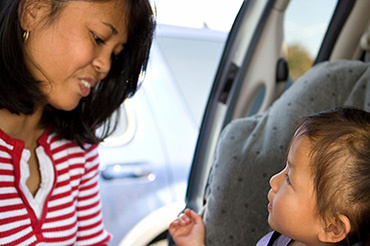Child Passenger Safety
Definition: Child passenger safety requires consistent use of correctly installed safety seats, booster seats, or seat belts that are appropriate for a child's height, weight, and age.
Magnitude of the Problem
- Motor vehicles crashes are the leading cause of injury death among children ages 14 years and under, according to the 2020 Centers for Disease Control and Prevention’s WISQARS data.
- According to the National Highway Traffic Safety Administration’s (NTHSA) Fatality Analysis Reporting System data from 2020:
- An average of 3 children aged 14 and under were killed, and 380 were injured every day in traffic crashes.
- 42% of the child passengers who died in a crash, for whom restraint use was known, were not restrained or buckled up.
- Child safety seats and belts can reduce severe and fatal injuries (CDC Child Passenger Safety Facts)
- Child safety seat use reduces the risk of injury for infants and toddlers by 71-82% when compared with seat belt use alone
- Booster seat use reduces the risk for serious injury by 45% for children ages 4-8 when compared with seat belt use alone
- Seat belt use reduces the risk for death and serious injury by about half for car passengers ages 5 and older
Prevention
Strategies to improve child passenger safety include:
- Child safety seat and booster seat distribution and education
- Proper installation and use of child safety seat, booster seat, or a seat belt
- Spread and use of certified child passenger safety technicians
- Community-wide information and enhanced enforcement campaigns
- Incentive and education programs that provide rewards to parents or children for the purchase and proper use of child safety seats
- Programs to serve children with neurodevelopmental conditions or other special health care needs. To find a technician with special needs training, go to Find a CPS Technician and check "Special Needs" under "Extra Training"
Image

- admin
Pagination
- First page
- Previous page
- 1
- 2
- 3
- 4
- 5